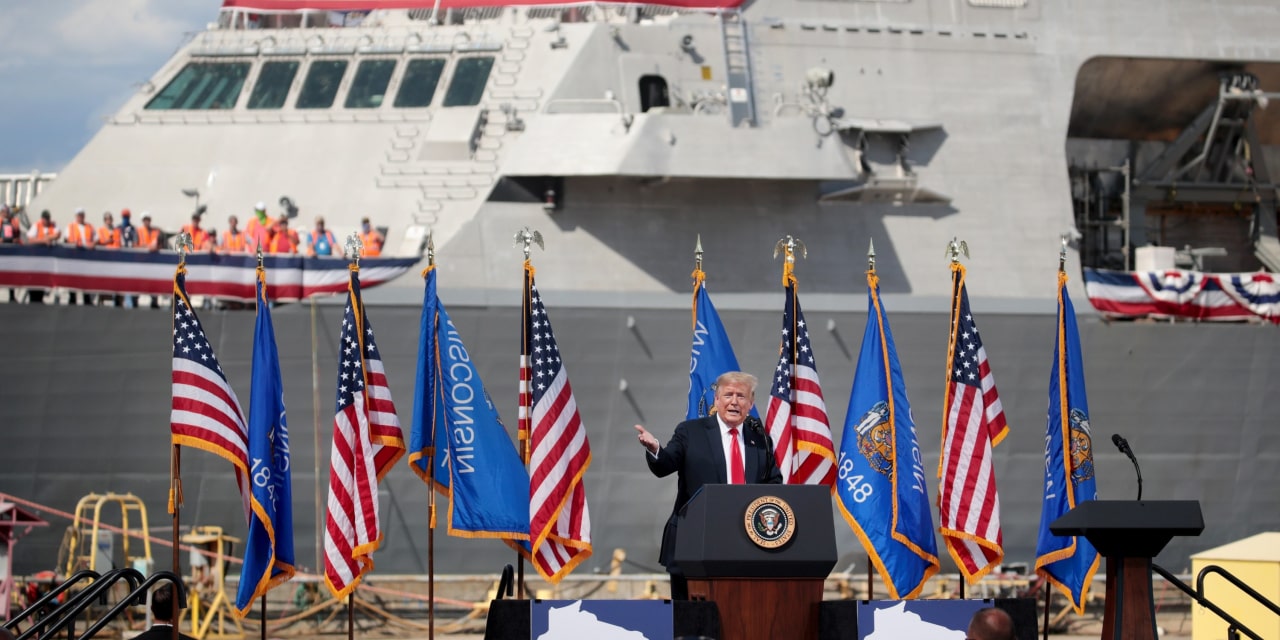Is the US Navy Losing to China? New Warship Data Sparks Debate
The US Navy's dominance of the seas, a cornerstone of American global power for decades, is facing an unprecedented challenge from a rapidly modernizing Chinese fleet. Recent data on warship construction and capabilities has ignited a fierce debate: is the US Navy losing the race? The answer, as we'll explore, is complex and multifaceted, depending on how you define "losing."
The Numbers Don't Lie: China's Rapid Expansion
One undeniable fact is China's breathtaking pace of naval expansion. While the US Navy still boasts a larger overall fleet, China's shipbuilding capacity is staggering. Recent reports indicate:
- Increased Ship Launches: China is launching new warships at a rate significantly exceeding that of the US, focusing on both quantity and quality. This includes advanced destroyers, frigates, and aircraft carriers.
- Focus on Modernization: China isn't just building more ships; it's investing heavily in advanced technologies, including hypersonic weapons, improved anti-ship ballistic missiles, and sophisticated electronic warfare capabilities. This directly challenges US naval superiority in key areas.
- Expanding Blue Water Navy: China's ambition extends far beyond its coastal waters. Its growing fleet is increasingly capable of projecting power globally, challenging US influence in key regions like the South China Sea and beyond.
Analyzing the Data: Beyond Sheer Numbers
While the sheer number of ships launched by China is impressive, focusing solely on quantity is misleading. The US Navy invests heavily in advanced technologies and sophisticated platforms, resulting in superior capabilities per ship in many respects. This includes:
- Technological Advantage: The US Navy maintains a significant lead in areas like carrier technology, submarine capabilities, and advanced sensor systems. These advantages are crucial in asymmetric warfare scenarios.
- Global Reach and Alliances: The US Navy benefits from a vast network of global bases, alliances, and logistical support, enabling rapid deployment and sustained operations worldwide – a network China is still developing.
- Experience and Training: Decades of experience in large-scale naval operations provide the US Navy with a significant advantage in terms of training, doctrine, and interoperability.
The Qualitative Factor: More Than Just Ships
The competition between the US and Chinese navies is not simply a numerical game. Several qualitative factors play a crucial role:
- Cyber Warfare and Information Dominance: The battlespace extends beyond physical ships. Both nations are investing heavily in cyber warfare and information operations, seeking to disrupt enemy communications and gain an informational advantage.
- Artificial Intelligence and Automation: The integration of AI and automation in naval systems is transforming naval warfare. Both the US and China are racing to develop autonomous weapons and AI-driven command and control systems.
- Economic and Political Factors: The naval arms race is inextricably linked to broader economic and geopolitical competition between the US and China. Resource allocation, technological development, and international alliances all play a significant role in determining the outcome.
Conclusion: A Race, Not a War (Yet)
The data clearly shows China is rapidly closing the gap with the US Navy. While the US still holds an overall advantage, it's undeniable that China’s naval growth poses a significant challenge. This is not a zero-sum game; it's a dynamic competition requiring continuous adaptation and innovation from both sides. The future balance of power at sea will depend on factors beyond just the number of ships, encompassing technological advancements, strategic partnerships, and overall geopolitical strategy. The race is far from over.
Further Reading:
Disclaimer: This article presents a balanced overview based on available data. The interpretation of this data and its implications are subject to ongoing debate and analysis.
